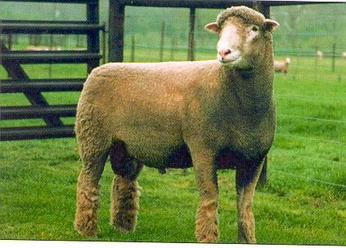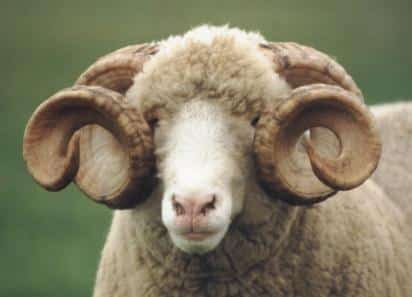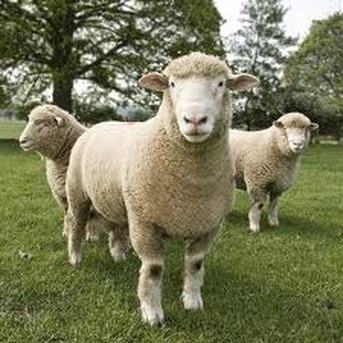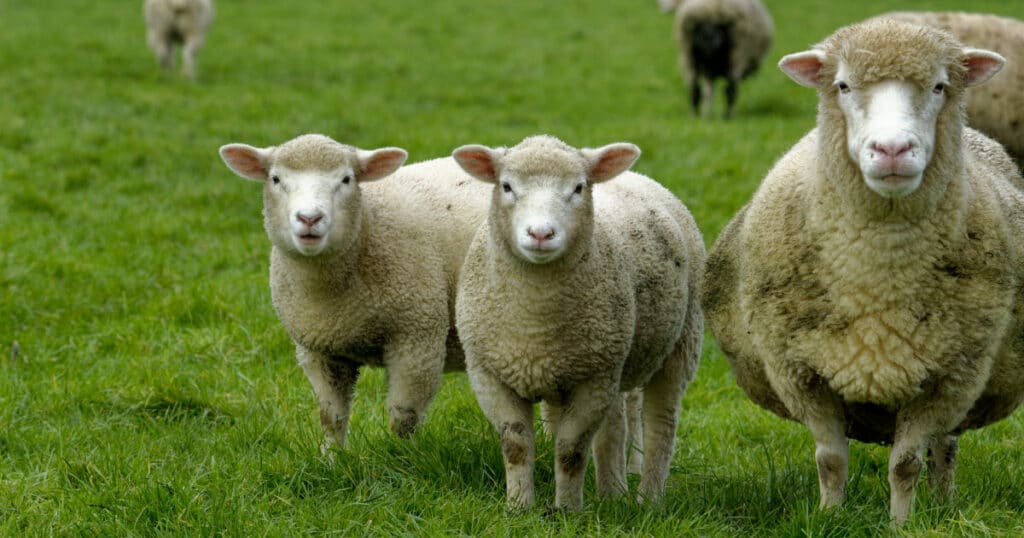Dorset sheep are famous for their lambing abilities since they are a breed which can lamb up to two times each year. It is also possible for Dorset ewes to lamb year-round as many of them don’t pause their estrus cycle during the warmer months the way other sheep breeds do.
This makes the Dorset an ideal breed of sheep to use as the foundation for commercial ewe flocks – providing farmers with the flexibility to lamb at any time of year and to maximize profits by producing more crops of lambs each year.
History of the Dorset Sheep Breed
The Dorset breed is a mix of several older breeds. Wale’s Horned Sheep and Spanish Merino sheep were crossed to establish the original line. But the Dorset has been around as a distinct breed for years.

Today Dorsets can be found in Wales, Dorset, Devon and Somerset. It’s a breed that has become popular on commercial and hobby farms around the globe.
Horned Dorsets vs Polled Dorsets
In 1885, Horned Dorsets were first introduced to the United States where polled Dorsets (Dorsets without horns) were later developed due to dominant polled genes.
Polled Dorset sheep have emerged as the preferred variety in many commercial operations in farm states in the U.S.


Prolific mothers, Dorset ewes provide a lot of milk and produce lambs that grow and mature at a moderate rate, providing carcasses which are suitable to most commercial market lamb operations.
This beautiful breed is common throughout the United States and many 4-Hers begin their 4-H sheep project with a Dorset ewe lamb.
Dorset Sheep Breed Information
| Mature Body Weight | Ram: 225 – 275 pounds Ewe: 150 – 200 pounds |
| Average Fiber Diameter | Micron 26 – 32 USDA Wool Grade 48’s – 58’s |
| Grease Fleece Weight | 5 – 8 pounds |
| Wool Staple Length | 3 – 4.5 inches |
For more information about Dorsets, or to find a breeder in your area, visit the Continental Dorset Club website.

